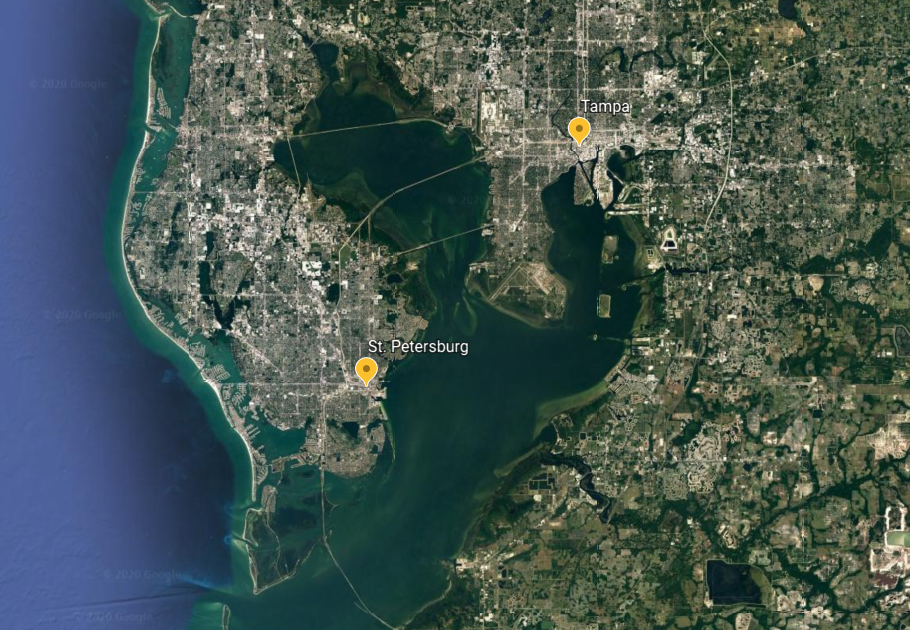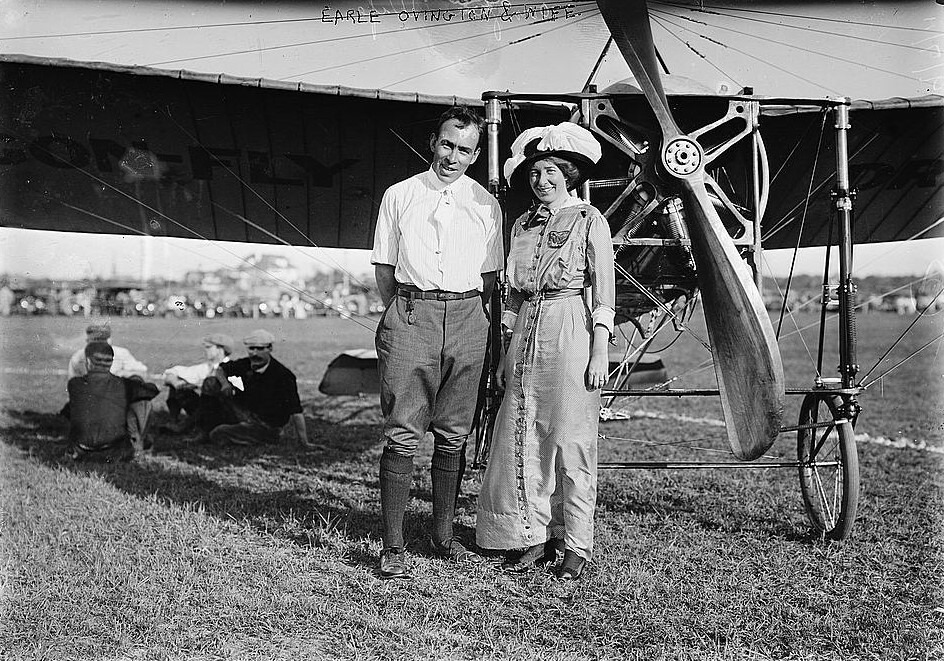The Beginnings of Commercial Aviation
Beginnings, Commercial
10 November 2020
As flight technology became increasingly reliable, the potential for profit became apparent. Surely enough, people took advantage of it.
The first passenger airline was DELAG (Deutsche Luftschiffahrts-Aktiengesellschaft), which used airships to create a robust network of global air transport. The airline was started in 1909 offering flights within Germany. It was also the first airline to fly passengers across the atlantic. Flights were luxurious and expensive, with a flight from Frankfurt to New York costing $400 (now worth about $6,000). Unfortunately, the Hindenburg disaster instantly wiped out the airship industry.
The first heavier-than-air airline was short lived, only offering service for about three months in 1914. The St. Petersburg-Tampa Airboat line provided regularly scheduled cargo and passenger flights from St. Petersburg to Tampa, Florida using Benoist XIV flying boats. The geographic advantages of this particular route may have been the sole reason it lasted as long as it did. A twenty-three minute flight was all it took to jump over the Tampa Bay, but the same route would have taken eleven hours by rail. The airline ceased operations lacking the funds to continue.
1. The LZ-7 Deutschland, the Dirigible operated by DELAG which operated the first ever commercial passenger flight in 1910. Image via Library of Congress. 2. The Benoist XIV; the aircraft that operated the first regularly scheduled heavier-than-air commercial flight for the St. Petersburg-Tampa Airboat Line. Image via Florida Photographic Collection. 3. Current satellite view of St. Petersburg and Tampa, FL. The direct distance between the two cities is significantly shorter than a route overland. Rendering by Google Earth. Image data from Landsat/Copernicus.
1. Earle Ovington and his wife standing in front of his Bleriot monoplane, which he used to make the first authorized airmail flight in the US. Image via Library of Congress. 2. A Curtiss JN-4H "Jenny", the aircraft type first used for scheduled airmail services. Image via Library of Congress.
However, the first heavier-than-air commercial flights began with airmail. Aviation had become increasingly prominent in America, and people saw the potential for faster, more efficient transportation of mail. On September 23rd, 1911, Earle Ovington piloted the first authorized US Airmail flight from Garden City Estates, NY to Mineola, NY. He was followed by 7 other pilots. Although this was a one-time event, it served as a major proof of concept, securing faith in reliable transportation of mail by aircraft.
In May of 1918, Army Air Service pilots began the first scheduled airmail flights, which operated once daily from New York City to Washington, D.C. via Philadelphia. Service began using the Curtiss JN-4H "Jenny," which was originally used to train pilots during World War I. After three months, the Post Office took over airmail services and used civilian pilots and aircraft made by the Standard Aircraft Corporation.
As airmail became more and more effective, new routes were added, forming a network connecting mail rapidly across the country. Transcontinental airmail routes also brought about the first regularly scheduled night flights. New infrastructure also came about in the form of airfields and navigational light towers.
Perhaps the most famous airmail pilot was Charles Lindbergh, who made history in 1927 with the first solo nonstop transatlantic flight. He became an instant celebrity upon returning to the US, bringing aviation to the forefront of the American mind. Some historians believe that among other factors, Charles Lindbergh’s fame caused a jump start in the aviation industry, inspiring many to start new airlines and companies in the late 1920s. On October 29, 1929, the stock market crashed and the Great Depression began. In an overall state of economic despair, most industries suffered greatly with widespread unemployment and bankruptcies. Make no mistake, the aviation industry suffered too, but surprisingly not as much. This was perhaps due to demand in the military, as well as later New Deal programs such as the WPA, PWA, CWA, FERA, and more.
With the aviation industry robustly situated in the American economy, it was well poised to change both transportation and the armed forces, which it did indeed.
The History of Airmail, presented by the Smithsonian Institution National Postal Museum.
References
- "Airmail: A Brief History". United States Postal Service, 2018. Accessed November 10, 2020. https://about.usps.com/who-we-are/postal-history/airmail.pdf.
- Bilstein, Roger E. "Aerospace Historians, Aerospace Enthusiasts." Technology and Culture 28, no. 1 (1987): 124-25. Accessed November 11, 2020. doi:10.2307/3105486.
- Crouch, Tom D., Bilstein, Roger E. and Boyne, Walter James. "The first airlines". Encylopedia Britannica. Accessed November 10, 2020. https://www.britannica.com/technology/history-of-flight/The-first-airlines.
- Glines, C. V. "Airmail Service: It Began with Army Air Service Pilots". Aviation History 1994 May.
- Glover, W. Irving. "The Air Mail." The Annals of the American Academy of Political and Social Science 131 (1927): 43-48. Accessed November 11, 2020. http://www.jstor.org/stable/1015744.
- Grossman, Dan. "DELAG: The World’s First Airline". Airships.net. Accessed November 10, 2020. https://www.airships.net/delag-passenger-zeppelins/.
- Lawson, F. Melvyn. "The United States Air Mail." Social Science 12, no. 4 (1937): 473-78. Accessed November 11, 2020. http://www.jstor.org/stable/23907342.
- "New Deal Category: Airports". The Living New Deal. Accessed November 10, 2020. https://livingnewdeal.org/new-deal-categories/infrastructure/airports/page/4/.
- Provenzo, Eugene F. "The St. Petersburg-Tampa Airboat Line." The Florida Historical Quarterly 58, no. 1 (1979): 72-77. Accessed November 11, 2020. http://www.jstor.org/stable/30146185.
- Simons, Peter. "Aviation's Heartland: The Flying Farmers and Postwar Flight." Agricultural History 89, no. 2 (2015): 225-46. Accessed November 11, 2020. doi:10.3098/ah.2015.089.2.225.
- Simonson, G. R. "The Demand for Aircraft and the Aircraft Industry, 1907-1958." The Journal of Economic History 20, no. 3 (1960): 361-82. Accessed November 11, 2020. http://www.jstor.org/stable/2114930.
- Vaeth, J. Gordon. "Zeppelin Decor: The Graf Zeppelin and the Hindenburg." The Journal of Decorative and Propaganda Arts 15 (1990): 48-59. Accessed November 11, 2020. http://www.jstor.org/stable/1504037.
- Wetherill, Richard B. "The First Official Air Mail." Indiana Magazine of History 35, no. 4 (1939): 390-99. Accessed November 11, 2020. http://www.jstor.org/stable/27787101.
- "The World's First Scheduled Airline". Smithsonian National Air and Space Museum: America by Air. Acessed November 10, 2020. https://airandspace.si.edu/exhibitions/america-by-air/online/early_years/early_years01.cfm.




